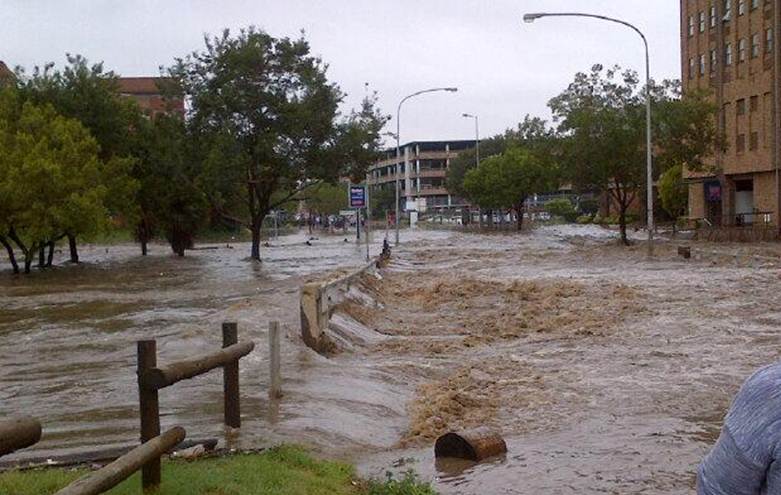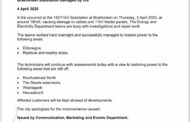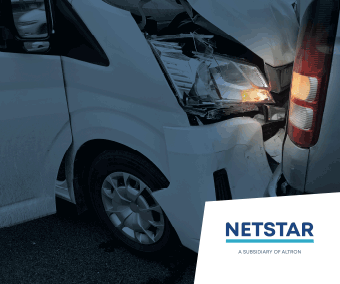It would be difficult not to be anxious, when negotiating a corner with your car, to discover that the road ahead is under 30 cm of water. Flash floods can change freeways into roaring rivers in a short period of time. It is better to be prepared in case something like this happens to you.
Let’s see how we as motorists can stay safe when roads are flooded.
WHEN CAUGHT IN A DOWN-POUR
When it is raining heavily on the freeway, slow down immediately. Such conditions can easily destabilize a car. Water can play strange tricks on motorists. Hydroplaning, which is when a car’s tyres are ‘skiing’ on top of a film of water on the road, can seriously affect the steering ability of a car. If the right front tyre ploughs into a deep pool of water at speed, but not the front left tyre, the driver may struggle to keep the car travelling straight.
ENSURE THAT TYRES HAVE SUFFICIENT TREAD
Make sure that your tyres have enough ‘legal’ tread on them. The channels or tread on a tyre are not there to display some artistic design, but to eliminate water as quickly as possible when travelling though water. Smooth tyres are not only illegal, but also most prone to hydroplaning.
WHAT IS THE WEATHER DOING?
If you know heavy rains are imminent, avoid taking routes that involve low-lying bridges or sections where flash floods or large pools of water are likely to occur. However, often we are not so prepared, and if caught in a difficult situation, this is what we should do.
HOW DO WE DEAL WITH LARGE WATER POOLS ON THE ROAD?
If it is difficult to guess the depth of a pool on the road, try and drive as close as possible towards the edge of the pool, or in areas where the water is likely to be shallow. Avoid allowing water to reach as high as the centre of the car wheel. Your car may not be swept away, but the rising water could cause great damage.
AVOID DRIVING THROUGH THE CENTRE OF A WATER POOL
Because water is usually murky, it will be difficult to gauge the depth of a pool on the road. What if there is a deep, gaping pothole in the centre of the pool? Do not overtake against oncoming traffic when travelling in a pool, in case your car should suddenly stall.
TORRENTS OF WATER
Avoid driving through any fast-flowing water. It doesn’t take much to lose control of your car or even stall it, when water is touching its bottom part. This usually occurs when water is 15 cm deep.
COMPLETELY AVOID 30-CM DEEP WATER
You will lose control of your car, which may even be washed away, when water is about 30 cm deep or reaches the centre of the car’s wheels. All the tyres will lift off the road surface at this stage. Heavier vehicles with higher clearance, such as 4x4s, will be washed away in 60-cm deep water.
When you feel your car is beginning to float, try and open the door. This will make the car heavier so that the wheels can touch the road again. Abandon the car if you really feel the car is beginning to be swept away. You can always replace the car one day, but not your life.
DRIVE SLOWLY
Engage your car in first gear when driving through deep water. This will avoid creating a bow wave, which could reach higher into the engine.
AFTER LEAVING THE WATER, DRIVE THE CAR TO DRY THE BRAKES AND CLUTCH
When you leave the fast-flowing water, continue to drive your car, braking and changing gears often. Otherwise, the brakes and clutch could rust overnight.
WHEN STALLING IN WATER, DO NOT RESTART THE CAR
If there is no danger of being swept away, avoid restarting the car, in case water has reached high inside the engine. Rather wait until a mechanic has assessed the car for water damage.
KEEP COMMUNICATION CHANNELS OPEN
When in danger of being flooded, try and wrap your cell phone in a plastic bag if you can get hold of one. Then store it on your person, for instance, in your underpants. It will allow you to make an emergency call later.
Prevention is better than cure, the saying goes. Try and avoid as much as possible to travel in bad weather. However, if you are caught unawares on flooded roads, having the above tips in mind should help keep you safe.
Also view:
Road Safety and Flood Risks for Drivers and Pedestrians
Disclaimer:
This article was prepared by Eric Sandmann in his personal capacity. The views and opinions expressed in this article are the author’s own and do not reflect the views and opinions of Prime Meridian Direct (Pty) Ltd, FSP41040 (car insurance and life cover products). The views and opinions in the article should not be attributed to anyone but the author unless expressly stated. Nothing in this article should be relied upon as advice, this publication is presented for informational purposes only. No person should act or refrain from acting in reliance on any information found in this article, without first obtaining proper financial advice from the appropriate professional. The author makes no claims, promises or guarantees about the accuracy, or completeness, of any information linked from, referred to, or contained in this article. The author reserves the right, to edit and change the content of this article.

























